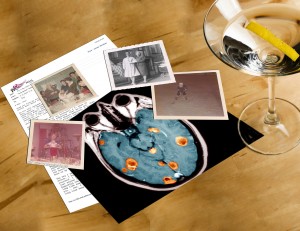“It Is What It Is.” Again.
If you missed its sold-out run in the San Francisco Fringe Festival, now’s your chance to see “The play for people who hate theatre” (me). It’s part of the 2010 San Francisco Theater Festival (www.sftheaterfestival.org), a one-day celebration of theater, theater, and theater in & around San Francisco’s beautiful Yerba Buena Gardens. There’s 1 performance only, and it’s Sunday, August 8, at 3:55pm. The location is the second floor of SPUR (San Francisco Planning & Urban Research — they do some really cool stuff worth checking out) located at 654 Mission Street@ Third in San Francisco. [youtube]http://www.youtube.com/watch?v=w3qF34bP60M[/youtube]
We are once again blessed to have Kathryn Wood on board as our director, and Cara Newman as Stage Manager. Of the cast, Katarina Fabic, Robert Anthony Peters, & Duane Schirmer return to the roles they originated: Lena, Bink, & George (respectively). New to the team is the absurdly talented Todd Brotze (as Peter), one of the shining stars of Killing My Lobster.
I bet right now you’re thinking, “If this is ‘The play for people who hate theatre’, then what the hell is it about?” Well I’ll tell ya:
What do you call that random moment of LOL levity that get us through a time of XXL gravity? Hey, It Is What It Is.
It Is What It Is (IIWII) incorporates multimedia (texting, emailing, IMing), onstage and in real time, to illustrate the many simultaneous lines of communication we conduct at any given time — and how the medium affects the message.
Grown siblings Peter, Lena, and their much younger brother Bink reunite at the deathbed of their elderly father, the curmudgeonly George. In doing so, it comes to light how childhood “memories” (both real and imagined) shaped the adults they became. The seeds of Peter’s need to control, Lena’s obsession with documenting events (while never looking closely at herself), and Bink’s inability to get anyone’s attention, are put under the microscope – and projected onto the stage wall, through their texts, emails, and instant messages; message that often contradict the actual words they speak.
Eventually the sleep deprivation takes its toll and the cocktails kick in: Peter, who has lived with and cared for George for the past 12 years, can no longer control his emotions — and admits why he’s so opposed to George being in a care center; Lena sobers up to the fact that her fabulous world is on the brink of implosion; and Bink discovers that being silenced gave him a power he never knew he had.
As George works his way through the “Grief Cycle,” with his dead wife Nancy as his confidant, his three children – both alone and together – work through this crisis and the other issues in their respective lives. And in doing so they consciously or unconsciously are “shaping” these new experiences — and thus curating future memories. And in the end, they discover that their dad is not the person they’d thought he was. And “family” is never what you expect it to be. But it is what it is.




